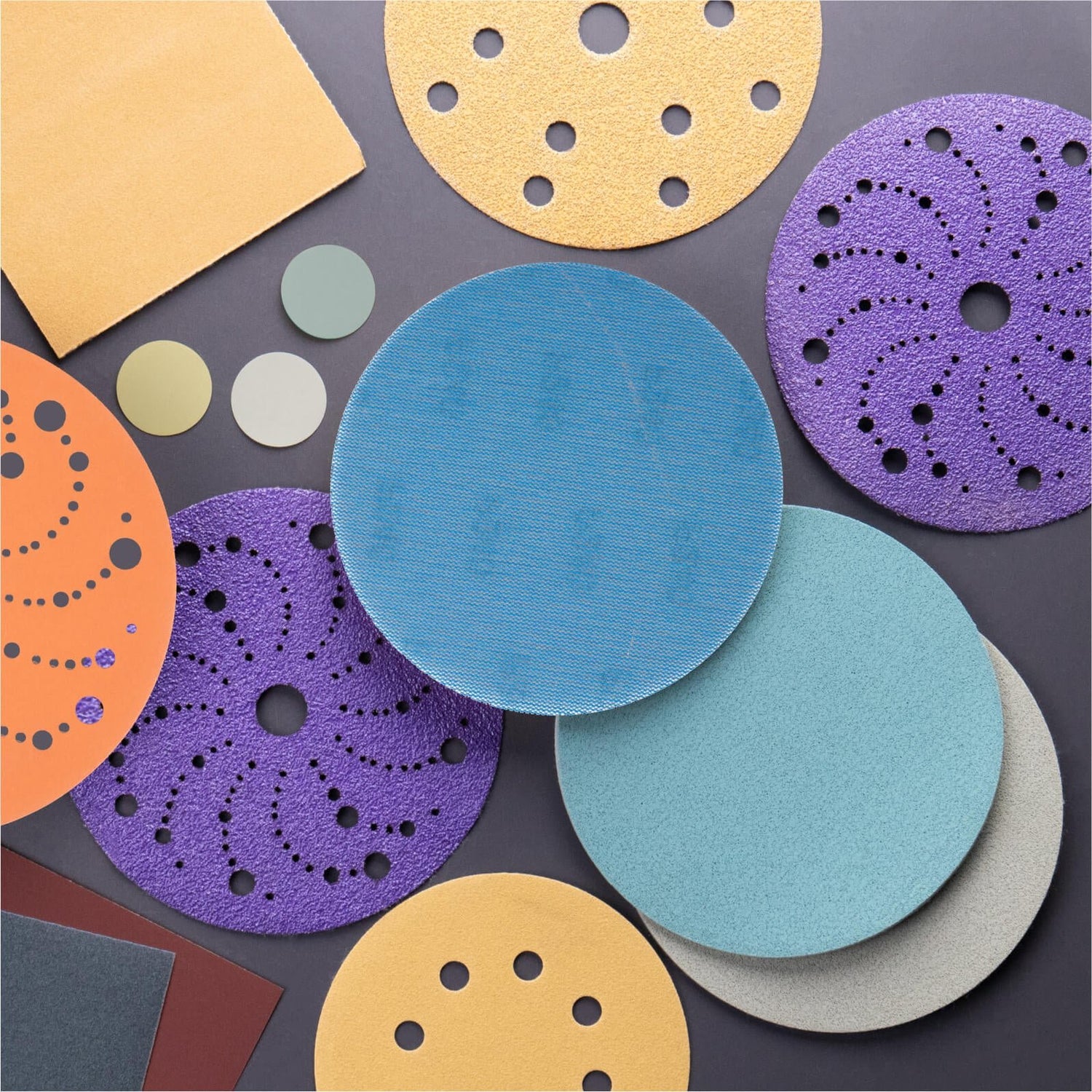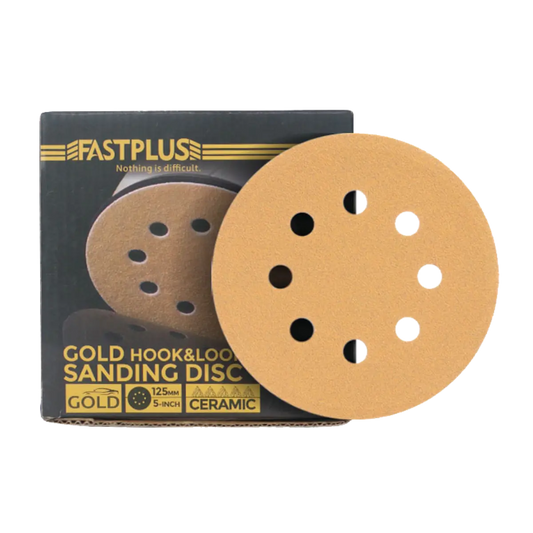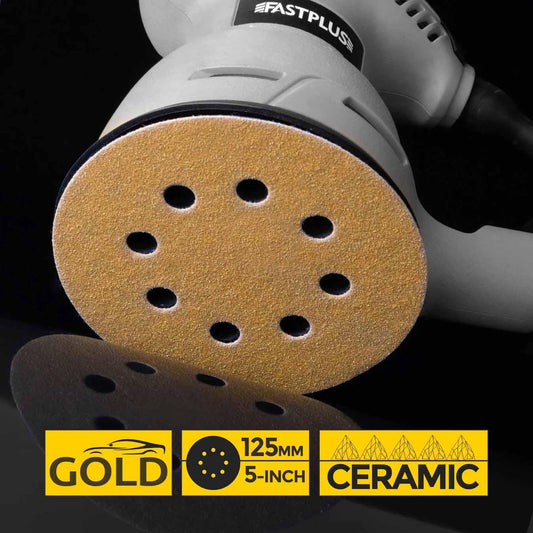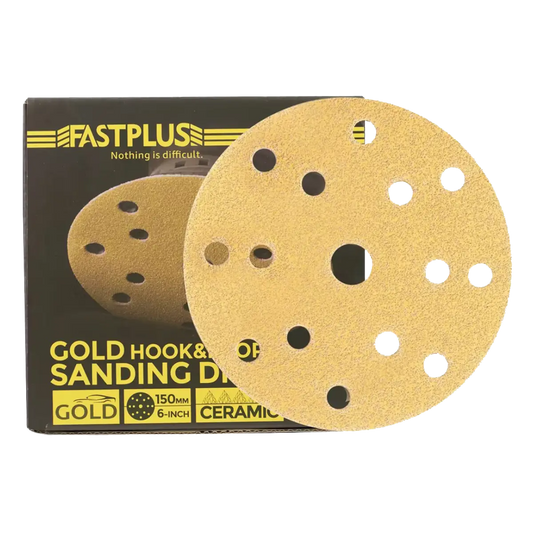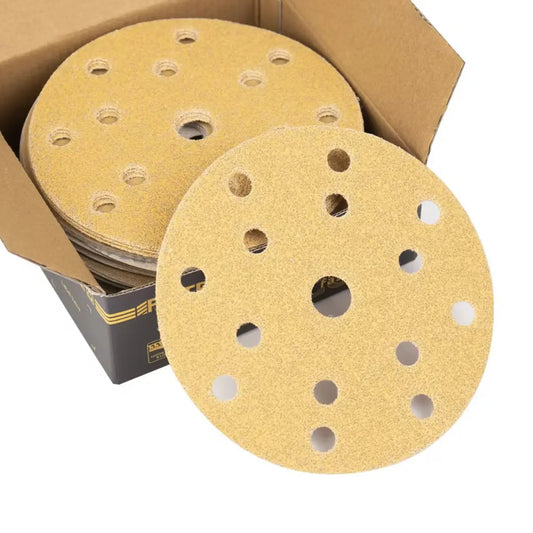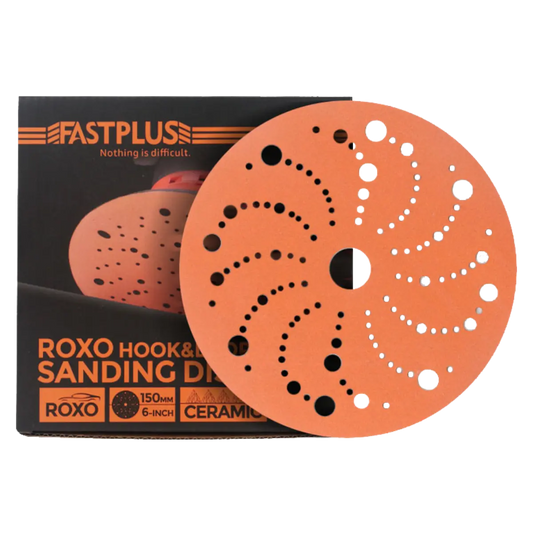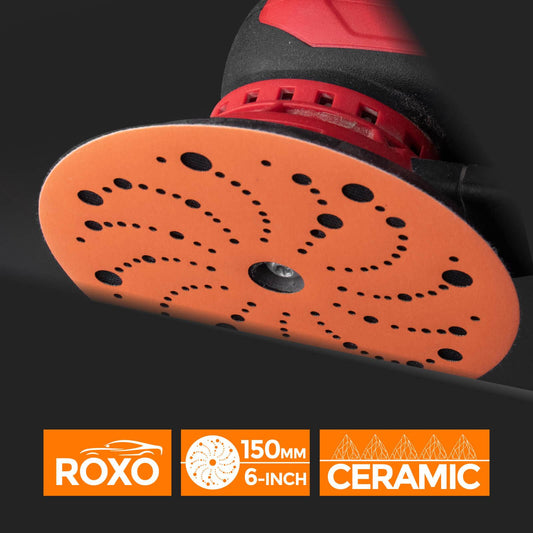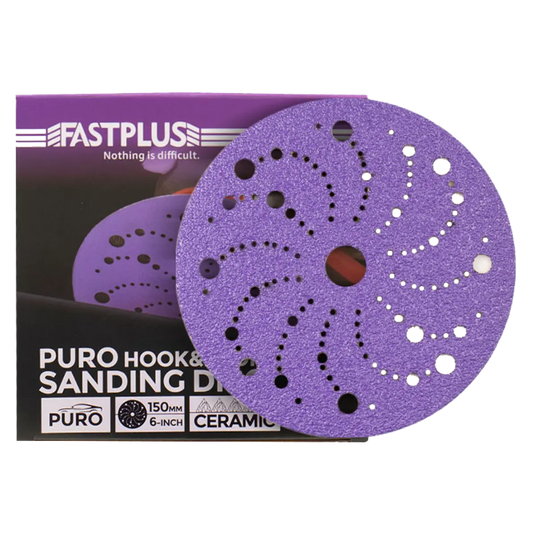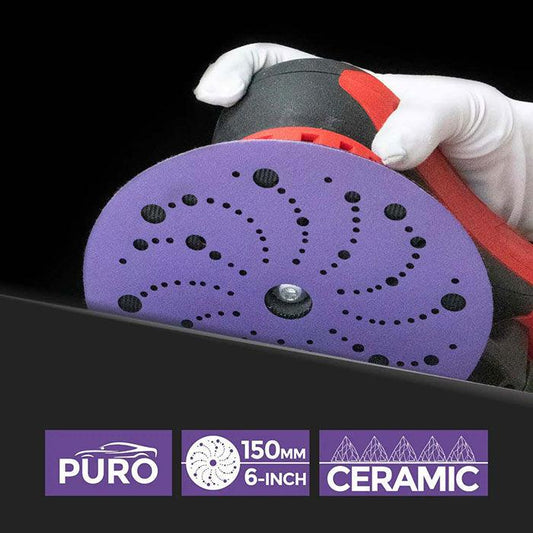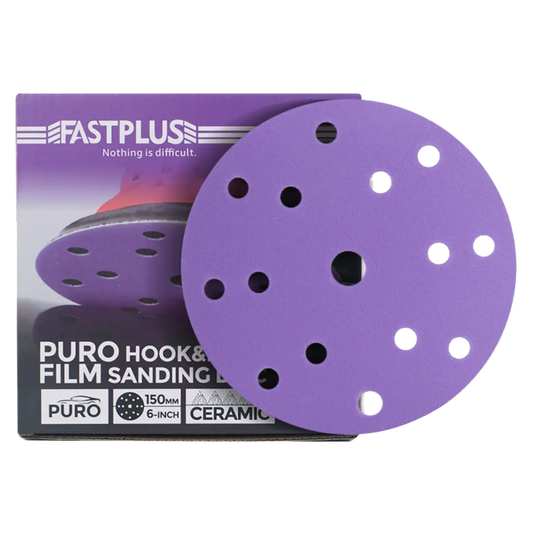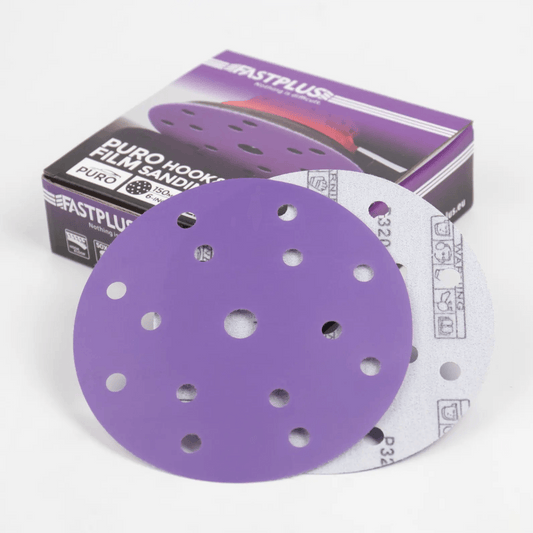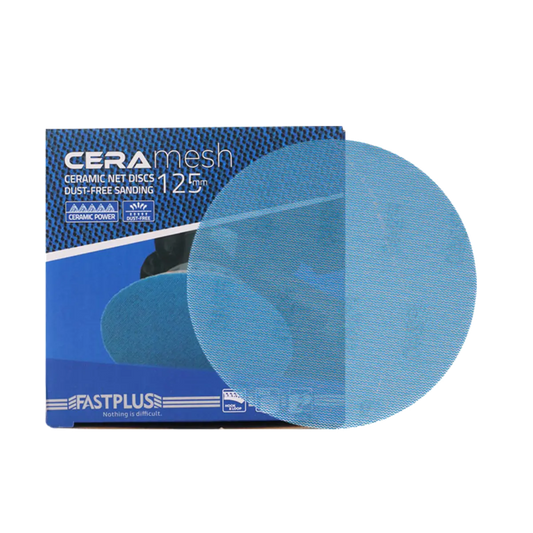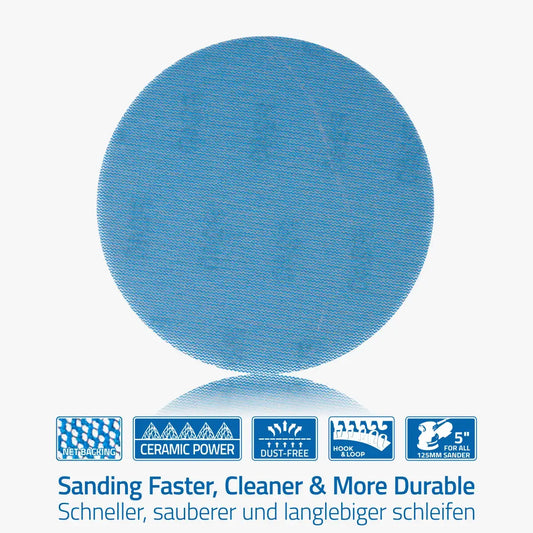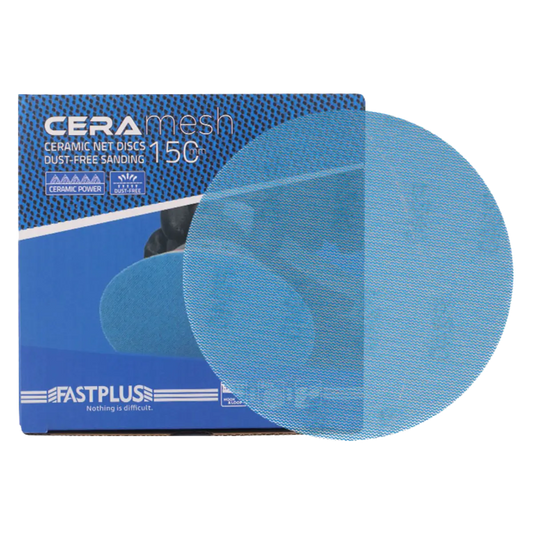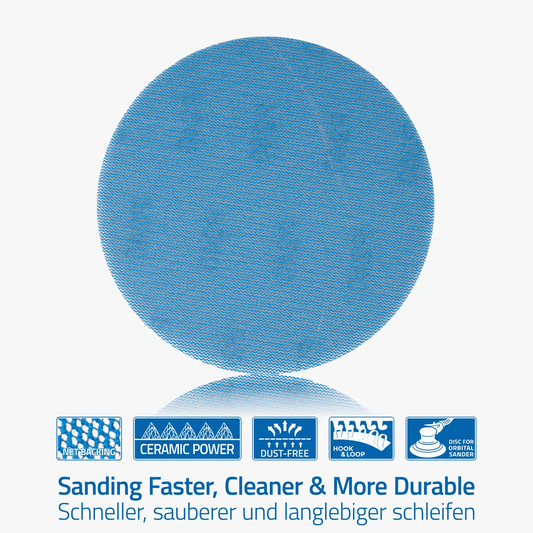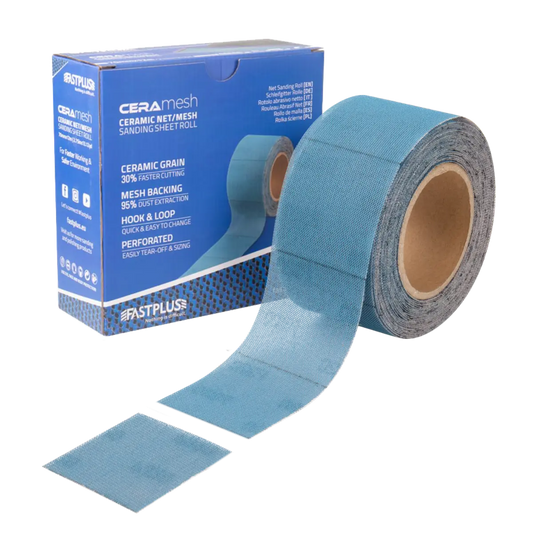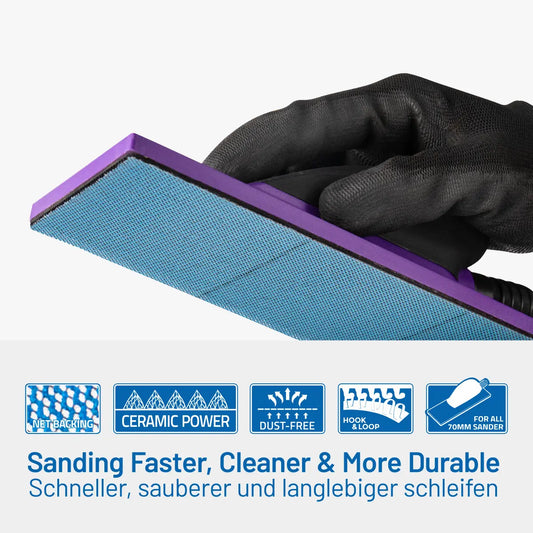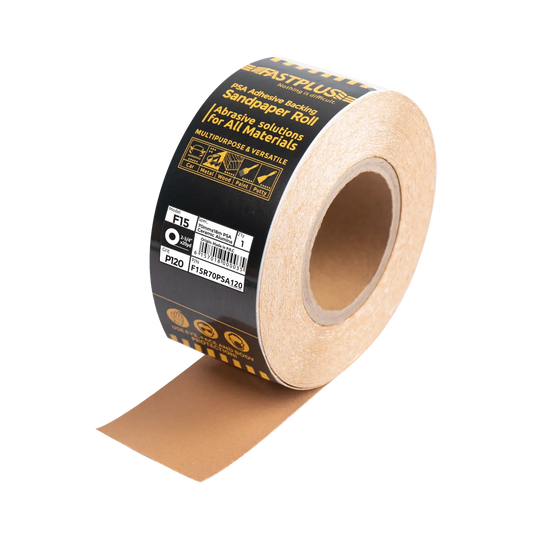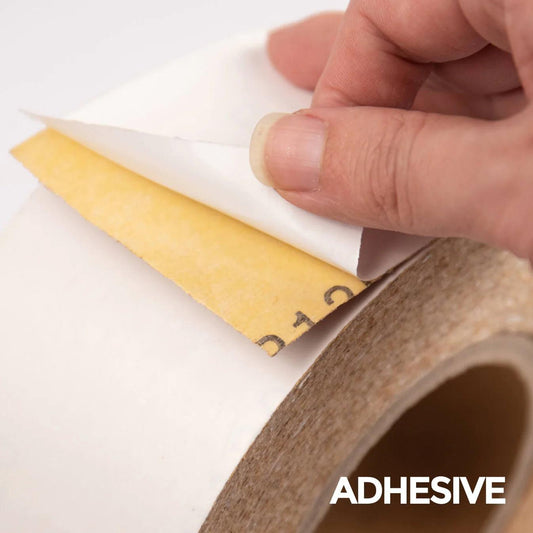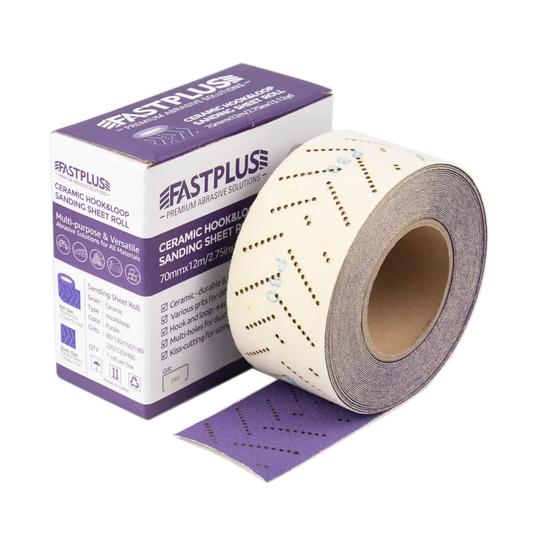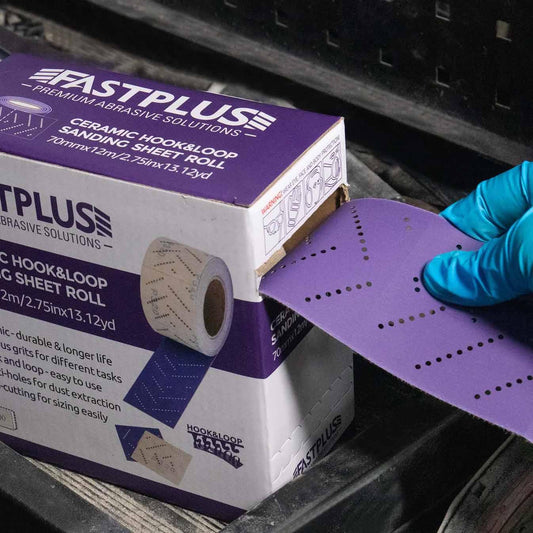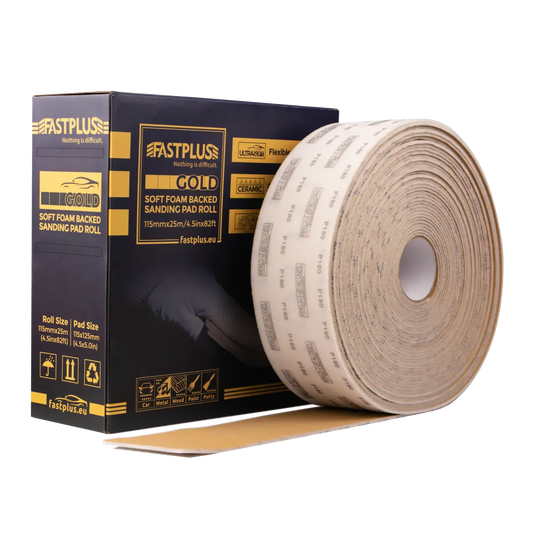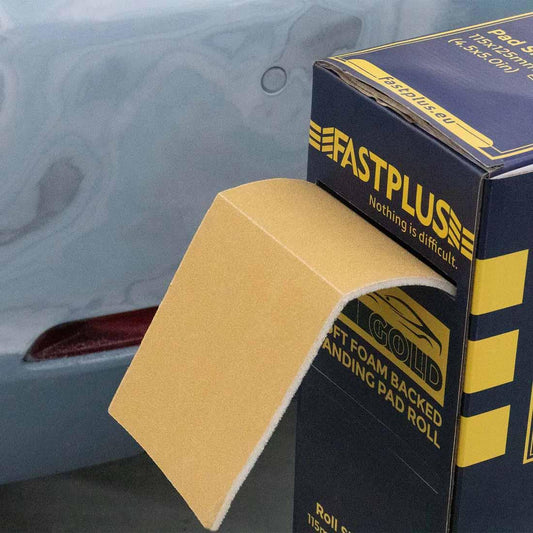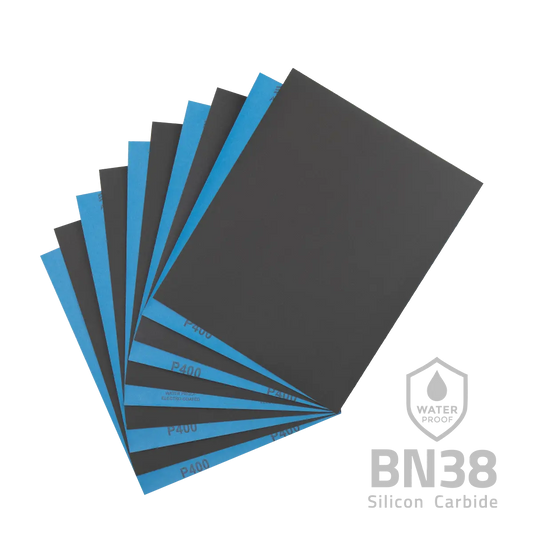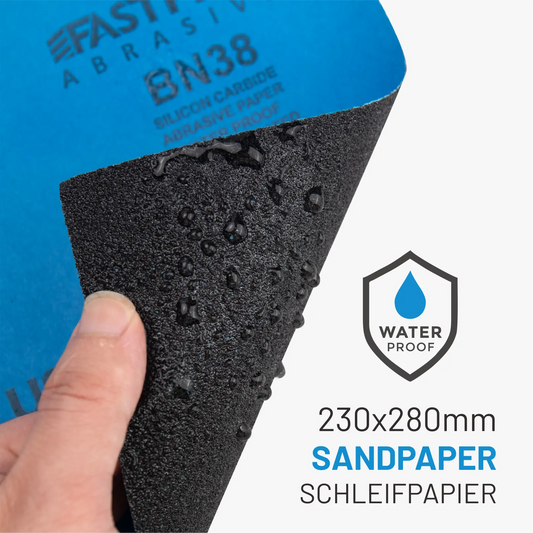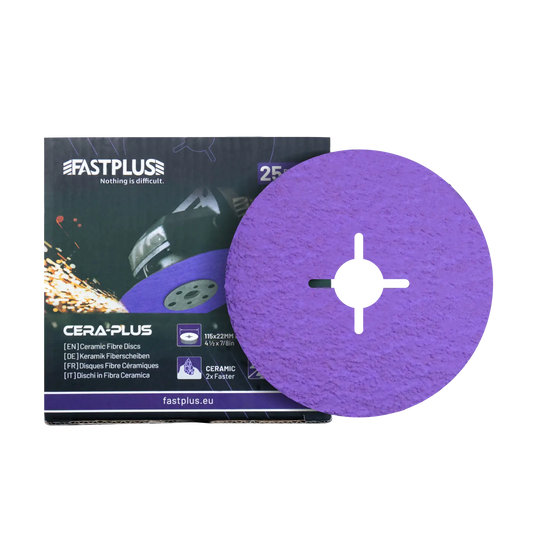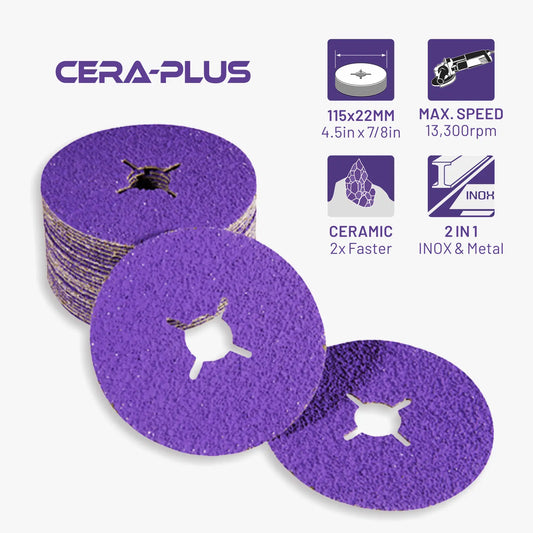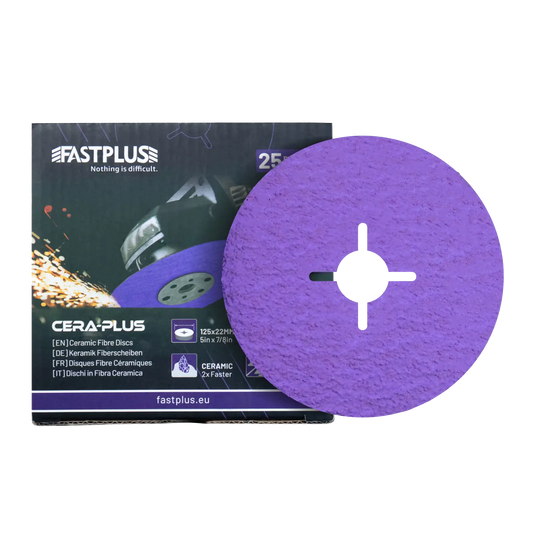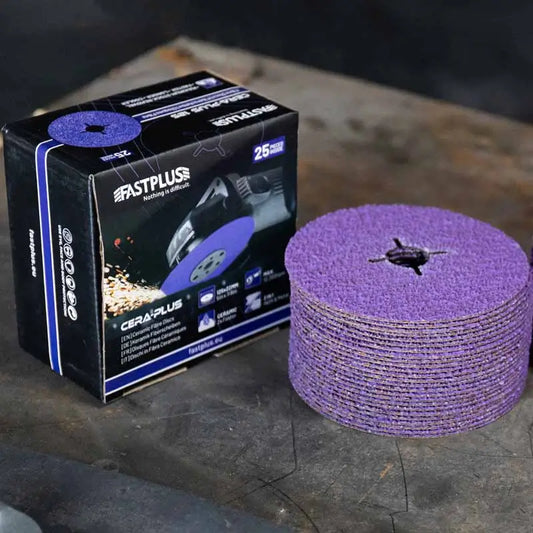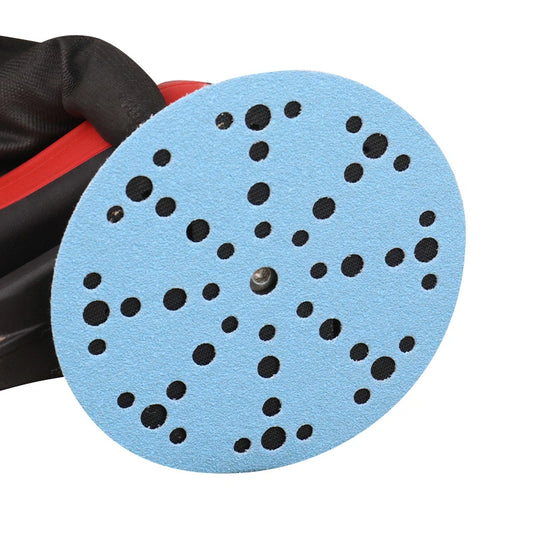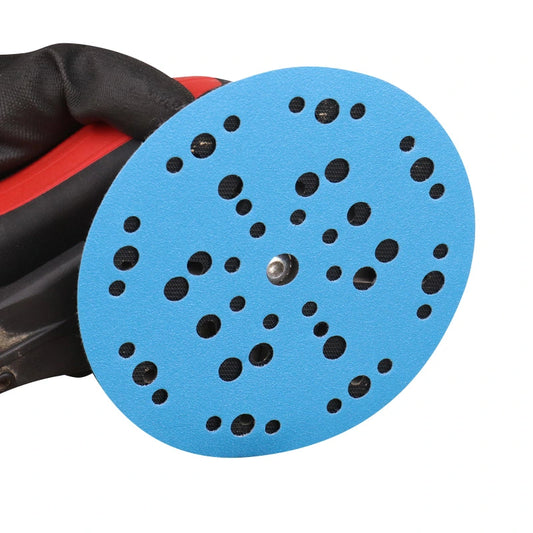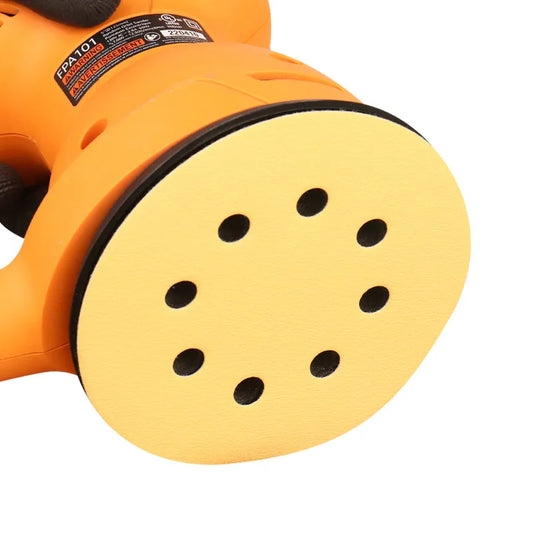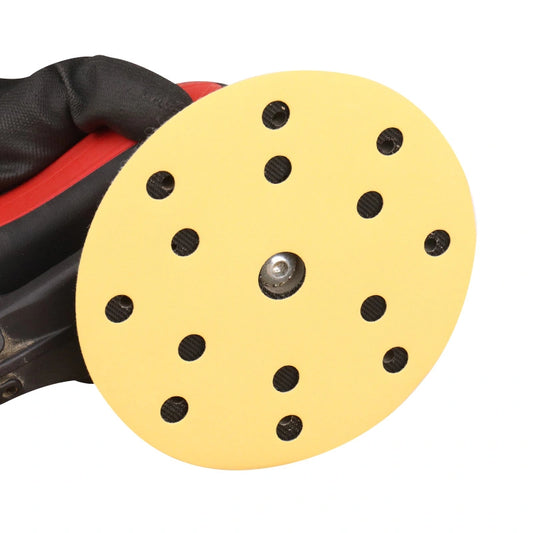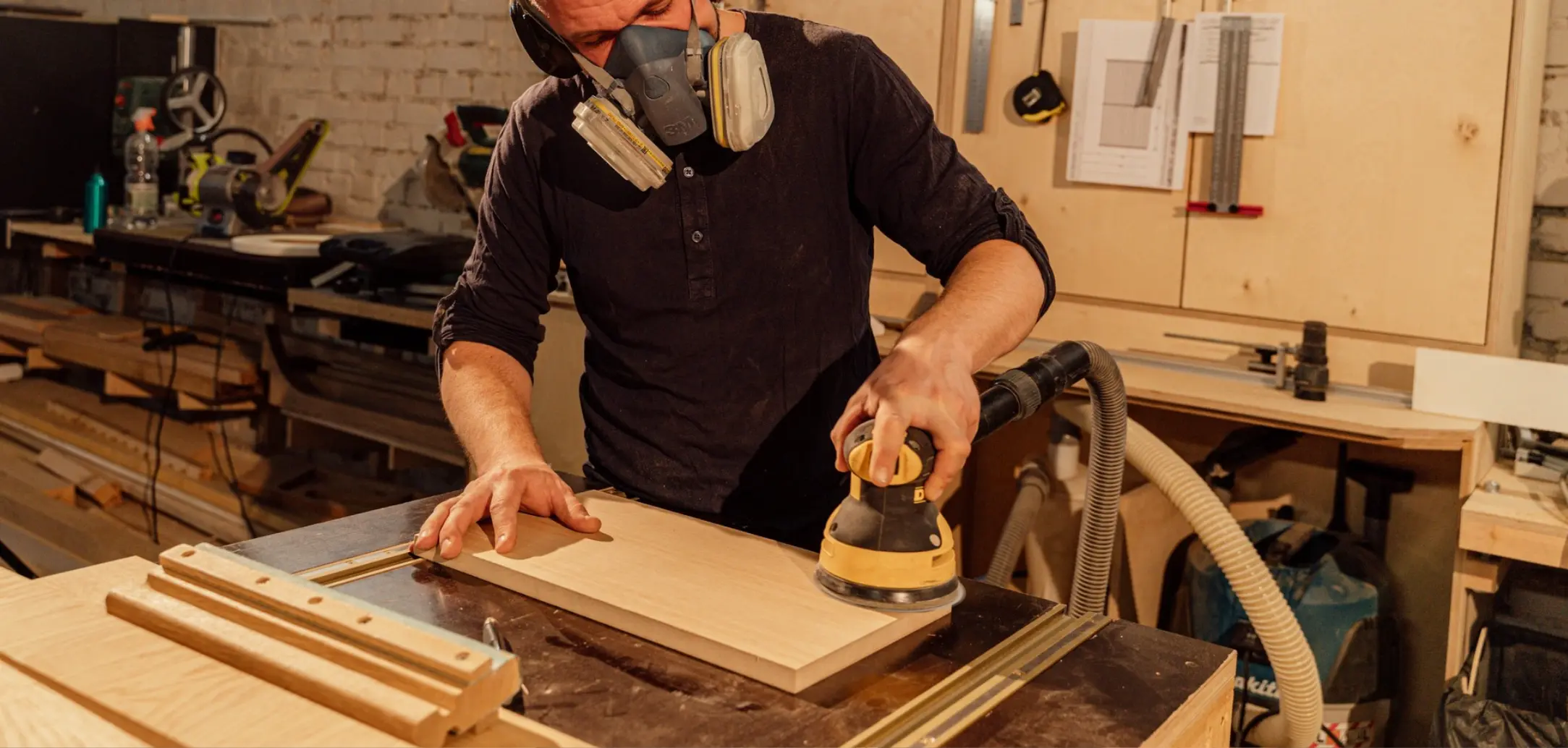
FASTPLUS DURABLE SANDPAPER
Try the most durable woodworking sandpaper available. FastPlus hook-and-loop ceramic sandpaper discs have a strong grind rate, resist clogging, and can be used over and over again. They're perfect for sanding a variety of materials, from wood to metal, plastic to drywall, and epoxy to painted surfaces.
Sandpapers for Wood
-
GOLD Sanding Discs Ceramic 125mm 8 Holes 50 pieces
Regular price From €15,59Regular priceUnit price / perGOLD Sanding Discs Ceramic 125mm 8 Holes 50 pieces
Regular price From €15,59Regular priceUnit price / perGOLD Sanding Discs Ceramic 125mm 8 Holes 50 pieces
Regular price From €15,59Regular priceUnit price / per -
GOLD Sanding Discs 150mm 15 Holes 50 pieces
Regular price From €19,69Regular priceUnit price / perGOLD Sanding Discs 150mm 15 Holes 50 pieces
Regular price From €19,69Regular priceUnit price / perGOLD Sanding Discs 150mm 15 Holes 50 pieces
Regular price From €19,69Regular priceUnit price / per -
ROXO Sanding Discs Ceramic 150mm 119 Holes 50 pieces
Regular price €26,99Regular priceUnit price / perROXO Sanding Discs Ceramic 150mm 119 Holes 50 pieces
Regular price €26,99Regular priceUnit price / perROXO Sanding Discs Ceramic 150mm 119 Holes 50 pieces
Regular price €26,99Regular priceUnit price / per -
PURO Sanding Discs 150mm 119 Holes
Regular price From €26,99Regular priceUnit price / perPURO Sanding Discs 150mm 119 Holes
Regular price From €26,99Regular priceUnit price / perPURO Sanding Discs 150mm 119 Holes
Regular price From €26,99Regular priceUnit price / per -
Film Sanding Disc PuroFilm 150mm Ceramic Velcro 15 Holes 50 pieces
Regular price €32,59Regular priceUnit price / perFilm Sanding Disc PuroFilm 150mm Ceramic Velcro 15 Holes 50 pieces
Regular price €32,59Regular priceUnit price / perFilm Sanding Disc PuroFilm 150mm Ceramic Velcro 15 Holes 50 pieces
Regular price €32,59Regular priceUnit price / per -
Net Sanding Disc 125mm CeraMesh Dust-free Ceramic + Mesh Discs Blue 50-piece
Regular price €32,59Regular priceUnit price / perNet Sanding Disc 125mm CeraMesh Dust-free Ceramic + Mesh Discs Blue 50-piece
Regular price €32,59Regular priceUnit price / perNet Sanding Disc 125mm CeraMesh Dust-free Ceramic + Mesh Discs Blue 50-piece
Regular price €32,59Regular priceUnit price / per -
Net Sanding Disc CeraMesh 150mm, Anti-clogging Dust-free Ceramic Mesh Discs Blue 50-pack
Regular price €39,59Regular priceUnit price / perNet Sanding Disc CeraMesh 150mm, Anti-clogging Dust-free Ceramic Mesh Discs Blue 50-pack
Regular price €39,59Regular priceUnit price / perNet Sanding Disc CeraMesh 150mm, Anti-clogging Dust-free Ceramic Mesh Discs Blue 50-pack
Regular price €39,59Regular priceUnit price / per -
Net Sanding Roll CeraMesh Ceramic + Mesh Velcro Strips 70mm, 12m/Roll
Regular price From €39,59Regular priceUnit price €3,55 / per mNet Sanding Roll CeraMesh Ceramic + Mesh Velcro Strips 70mm, 12m/Roll
Regular price From €39,59Regular priceUnit price €3,55 / per mNet Sanding Roll CeraMesh Ceramic + Mesh Velcro Strips 70mm, 12m/Roll
Regular price From €39,59Regular priceUnit price €3,55 / per m -
PSA Sandpaper Roll, Sticky Backing 70mmx18m
Regular price €20,59Regular priceUnit price / perPSA Sandpaper Roll, Sticky Backing 70mmx18m
Regular price €20,59Regular priceUnit price / perPSA Sandpaper Roll, Sticky Backing 70mmx18m
Regular price €20,59Regular priceUnit price / per -
Sanding Sheet Roll PURO 70mmx12m Ceramic Velcro Multi-hole
Regular price €29,59Regular priceUnit price / perSanding Sheet Roll PURO 70mmx12m Ceramic Velcro Multi-hole
Regular price €29,59Regular priceUnit price / perSanding Sheet Roll PURO 70mmx12m Ceramic Velcro Multi-hole
Regular price €29,59Regular priceUnit price / per -
Foam Sanding Pad Roll, Ultra-Soft Handpad Pre-cut 115mmx25m
Regular price €34,59Regular priceUnit price / perFoam Sanding Pad Roll, Ultra-Soft Handpad Pre-cut 115mmx25m
Regular price €34,59Regular priceUnit price / perFoam Sanding Pad Roll, Ultra-Soft Handpad Pre-cut 115mmx25m
Regular price €34,59Regular priceUnit price / per -
Wet and Dry Sandpaper, BN38 SiC 230x280mm 10 pieces
Regular price From €5,00Regular priceUnit price / perWet and Dry Sandpaper, BN38 SiC 230x280mm 10 pieces
Regular price From €5,00Regular priceUnit price / perWet and Dry Sandpaper, BN38 SiC 230x280mm 10 pieces
Regular price From €5,00Regular priceUnit price / per -
Fiber Discs 115mm Cera-Plus Ceramic + Resin Fiber 25 Pack
Regular price From €31,59Regular priceUnit price / perFiber Discs 115mm Cera-Plus Ceramic + Resin Fiber 25 Pack
Regular price From €31,59Regular priceUnit price / perFiber Discs 115mm Cera-Plus Ceramic + Resin Fiber 25 Pack
Regular price From €31,59Regular priceUnit price / per -
Resin Fiber Discs 125mm Cera-Plus Ceramic + Resin Fiber 25 Pack
Regular price From €33,59Regular priceUnit price / perResin Fiber Discs 125mm Cera-Plus Ceramic + Resin Fiber 25 Pack
Regular price From €33,59Regular priceUnit price / perResin Fiber Discs 125mm Cera-Plus Ceramic + Resin Fiber 25 Pack
Regular price From €33,59Regular priceUnit price / per -
Sanding Discs 150mm x 49 Hole Blue Ceramic for Festool Machine F65 – 50 Pack
Regular price €32,59Regular priceUnit price / perSanding Discs 150mm x 49 Hole Blue Ceramic for Festool Machine F65 – 50 Pack
Regular price €32,59Regular priceUnit price / perSanding Discs 150mm x 49 Hole Blue Ceramic for Festool Machine F65 – 50 Pack
Regular price €32,59Regular priceUnit price / per -
Sanding Discs 150mm x 47 Hole Blue Ceramic Adaptative F65 – 50 Pack
Regular price €32,59Regular priceUnit price / perSanding Discs 150mm x 47 Hole Blue Ceramic Adaptative F65 – 50 Pack
Regular price €32,59Regular priceUnit price / perSanding Discs 150mm x 47 Hole Blue Ceramic Adaptative F65 – 50 Pack
Regular price €32,59Regular priceUnit price / per -
Sanding Discs 225mm x Multi-Hole Blue Ceramic for Drywall & Floor Sanding F65 – 25 Pack
Regular price €38,59Regular priceUnit price / perSanding Discs 225mm x Multi-Hole Blue Ceramic for Drywall & Floor Sanding F65 – 25 Pack
Regular price €38,59Regular priceUnit price / perSanding Discs 225mm x Multi-Hole Blue Ceramic for Drywall & Floor Sanding F65 – 25 Pack
Regular price €38,59Regular priceUnit price / per -
Sanding Discs 225mm x 8+1 Hole Gold for Drywall & Floor Sanding F15 – 25 Pack
Regular price €35,99Regular priceUnit price / perSanding Discs 225mm x 8+1 Hole Gold for Drywall & Floor Sanding F15 – 25 Pack
Regular price €35,99Regular priceUnit price / perSanding Discs 225mm x 8+1 Hole Gold for Drywall & Floor Sanding F15 – 25 Pack
Regular price €35,99Regular priceUnit price / per -
Sanding Discs 125mm x 8 Hole Yellow Aluminium Oxide F25 – 50 Pack
Regular price From €15,59Regular priceUnit price / perSanding Discs 125mm x 8 Hole Yellow Aluminium Oxide F25 – 50 Pack
Regular price From €15,59Regular priceUnit price / perSanding Discs 125mm x 8 Hole Yellow Aluminium Oxide F25 – 50 Pack
Regular price From €15,59Regular priceUnit price / per -
Sanding Discs 150mm x 15 Hole Yellow F25 – 50 Pack
Regular price €19,69Regular priceUnit price / perSanding Discs 150mm x 15 Hole Yellow F25 – 50 Pack
Regular price €19,69Regular priceUnit price / perSanding Discs 150mm x 15 Hole Yellow F25 – 50 Pack
Regular price €19,69Regular priceUnit price / per
BEST SANDPAPER FOR WOOD
FastPlus offers the best sandpapers for wood, it is known that wood sandpaper is an essential tool in woodworking. It is used to smooth the surface of wood, preparing it for painting or varnishing. There are different types of sandpapers for wood supplied by FastPlus Abrasives, each with its unique features and uses.
- FastPlus Sanding Discs are circular sandpapers that are typically used with rotary orbital sanders. The sanding discs for wood provide quick and efficient sanding, especially on large wood surfaces.
- FastPlus CeraMesh Net-backed sanding discs, also known as mesh abrasives, can be quite effective for sanding wood since CeraMesh net sanding discs have unique advantages: minimal clogging, better dust extraction, more durable, less heat buildup, and easy cleaning. These advantages make net discs gain traction in woodworking.
- Fastplus PSA sandpapers, or Pressure-Sensitive Adhesive sandpapers, have an adhesive on the back that sticks to the sander, sanding blocks, longboards, or any objects. They are easy to attach and remove, making them popular for many woodworking projects, the self-adhesive sandpapers can be used to build a sandpaper drum for wood sanding.
- Fastplus Velcro sanding sheets are similar to PSA sandpapers but use a Velcro backing instead of an adhesive. This allows for easy swapping of sheets during a woodworking project.
- Fastplus foam sanding pads are used for contour sanding. The foam backing allows the sandpaper to conform to the shape of the wood, making it ideal for detailed woodworking projects.
- Fastplus wet or dry sandpaper sheets are 30% latex-paper coated abrasive sheets, they come with 230x280mm and are waterproof which is ideal for wet sanding, the waterproof sandpapers are suitable for wet sanding paints on wood with water for a fine finish and epoxy resin woodworking.
Frequently Asked Questions (FAQ)
What is the best sandpaper for woodworking?
The best sandpaper for woodworking is rarely the cheapest. With differences in paper, abrasive material types, and quality of build, the finish of your next project depends on the quality paper, it is important to choose the right type of sandpaper with the right grits to achieve good sanding results.
What are the types of abrasive grains for wood?
There are five general types of abrasive grain for wood sandpaper:
- Ceramic is another material best for high-pressure sanding jobs to cut wood. The aggressive nature of the material is beneficial in removing paint, primers, wood stains, or any rough spots on the wood.
- Ceramic Alumina is a premium grain that is known for its longevity.
- Silicon Carbide is a self-sharpening grit that is versatile from metal to wood and even glass. It specializes in wet/dry applications.
- Aluminum Oxide is by far the most common for woodworking and can be used for aggressive stock removal to fine sanding.
- Alumina Zirconia specializes in heavy stock removal with aggressive grit design.
What grit sandpaper is best for woodworking?
When it comes to sandpaper, choosing the right grit is just as important as selecting the right type for your project. The grit number determines how coarse or fine the sandpaper is, and it affects the outcome of your project. Here are some guidelines to help you choose the appropriate grit for different wood projects:
- Extra Coarse Grain (24, 30, or 36) - This is the grit to use for hardwood and softwood surfaces when you need to remove a lot of material quickly.
- Coarse Grain (40, 50, or 60) - This grit is best for removing dirt, debris, or material from a surface for a quick DIY job.
- Medium Grain (80) - If you need to sand a surface that requires medium to coarse sandpaper, this grit is a good choice. It's also suitable for sanding wood before painting or varnishing.
- Fine Grain (100 or 120) - This grit is ideal for prepping wood for finishing and can even remove water stains from wood.
- Very Fine Grain (150, 180, or 220) - Use this grit for sanding bare wood.
- Very Fine (240) - This grit is best for sanding between coats and on drywall.
- Extra Fine (320 or 360) - Start with this grit if you're polishing any type of wood, hard or soft.
- Super Fine (400, 500, or 600) - This grit is great for removing patches from wood surfaces and finishing, but it can't remove material.
- Ultra Fine (800 or 1000) - For highly delicate sanding jobs and for polishing thick surfaces on bare wood, this grit is the way to go.
Remember, selecting the right grit of sandpaper for your project is crucial for achieving that perfectly smooth surface you desire.
What is the best way to sand wood?
The best way to sand wood is more than just sanding with the grain. If your budget allows and you plan enough woodworking a drum sander will allow you to achieve sanding results you cannot achieve with hand sanders.
